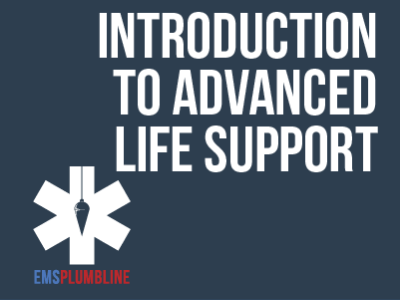 |
Constructing: Airway Essentials—Part 5 |
0.50 |
Most paramedics will tell you that online training will not allow you the opportunity to learn how to perform a psychomotor skill such as intubation. We agree to a point. You will find that the discussion with Dr. Christopher Galton, will likely have you thinking differently the next time you intubate a patient. Chances are your success rates will improve. Final Exam: This multiple choice exam is designed to test your knowledge of the material you just reviewed. You have two attempts to gain an 80% or higher on this exam. Please take your time and answer each question carefully. |
 |
Constructing: Airway Essentials—Part 6 |
0.50 |
This lesson on how to instrument the airway will give you fantastic ideas on how to create your next lab session. Take note as some pearls are offered by Dr. Christopher Galton, on how to assess and manage ALS airway procedures. Final Exam: This multiple choice exam is designed to test your knowledge of the material you just reviewed. You have two attempts to gain an 80% or higher on this exam. Please take your time and answer each question carefully. |
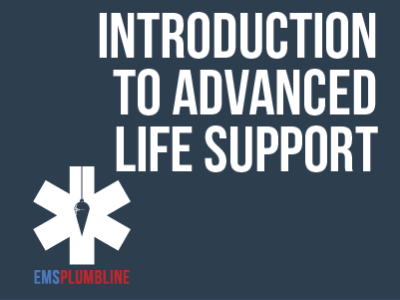 |
Constructing: Airway Essentials—Part 7 |
0.50 |
Every paramedic has ideas on what is needed to obtain a good view while instrumenting the airway. If this lesson does not create an educated discussion on the topic, nothing will. Take the opportunity to imagine yourself in the classroom and identify what you would do.Final Exam: This multiple choice exam is designed to test your knowledge of the material you just reviewed. You have two attempts to gain an 80% or higher on this exam. Please take your time and answer each question carefully. |
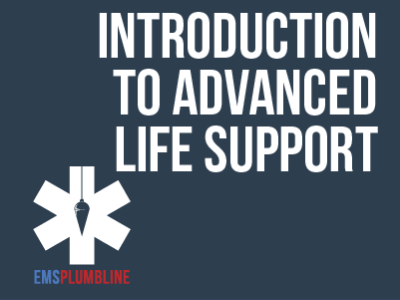 |
Constructing: Airway Essentials—Part 8 |
0.50 |
These eight Airway Essentials Lessons conclude with Dr. Christopher Galton's thoughts on what should be done after the ALS airway has been established. It is here that ideas are offered on what paramedics should read and learn more about to improve their practice. Grab a pencil and a notepad and get ready to graduate from the EMS Plumbline "Introduction to ALS" to the "Paramedicine" Division. Final Exam: This multiple choice exam is designed to test your knowledge of the material you just reviewed. You have two attempts to gain an 80% or higher on this exam. Please take your time and answer each question carefully. |
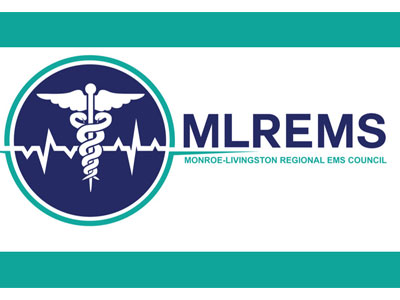 |
Constructing: FAST-ED Overview |
1.00 |
Professor of Emergency Medicine and Chief of the Division of Prehospital Medicine at the University of Rochester, Jeremy Cushman, brings his experienced team of prehospital providers together to discuss the benefits of Field Assessment Stroke Triage for Emergency Destination (FAST-ED). You will want to take notes and download your favorite smartphone app. This lesson is sure to spark an excellent discussion with your training officers and/or medical director(s).
Final Exam: This multiple choice exam is designed to test your knowledge of the material you just reviewed. You have two attempts to gain an 80% or higher on this exam. Please utilize the smartphone app of your choosing and take your time and answer each question carefully. |
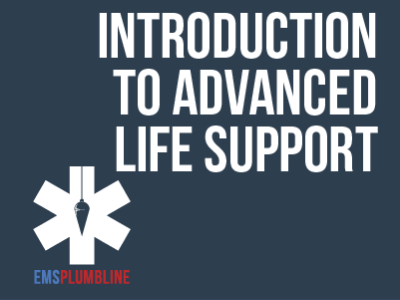 |
Constructing: Sepsis for Paramedics, Part 1—Overview |
1.00 |
Paramedic Michael Hoskins does a fantastic job discussing the gradual onset of this disease process with Medical Directors Jeremy Cushman and Christopher Galton. In this first of three segments, you will learn how we should look for sepsis and what questions every paramedic should ask. Final Exam: This multiple choice exam is designed to test your knowledge of the material you just reviewed. You have two attempts to gain an 80% or higher on this exam. Please take your time and answer each question carefully. |
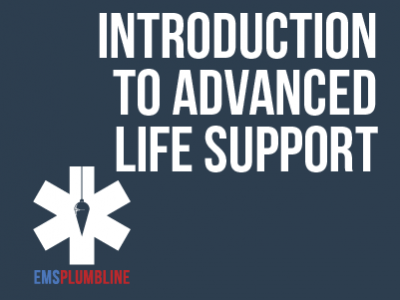 |
Constructing: Sepsis for Paramedics, Part 2—Fluid Resuscitation |
1.00 |
If you think caring for sepsis patients is not an interesting topic, you might want to think again. Medical Directors Jeremy Cushman and Christopher Galton, give Paramedic Hoskins a passionate description of proper patient care. Fluids are important and this is why. Final Exam: This multiple choice exam is designed to test your knowledge of the material you just reviewed. You have two attempts to gain an 80% or higher on this exam. Please take your time and answer each question carefully. |
 |
Construction Hazards |
0.50 |
This course covers the basics when discussing construction hazards you may see daily when working on a construction site. Preventative measures for falls and falling objects, electrical work, as well as excavations will be discussed throughout. |
 |
Construction Safety & Prevention Program: CSIP Introduction |
0.25 |
CSIP Introduction is part of a twelve-part construction safety and prevention program. This course introduces construction safety standards and preventing injury on the job. This course will also cover the structure of CSIP programs and OSHA considerations and rules. |
 |
Construction Safety & Prevention Program: Disciplinary Policy Employer Responsibility |
0.50 |
Disciplinary Policy Employer Responsibility is part of a twelve-part construction safety and prevention program. This course covers how to implement proper disciplinary programs in the case of safety violations or insubordination. You will learn how to keep track of these programs and learn how to communicate these programs. |
 |
Construction Safety & Prevention Program: Emergency Planning Response Procedures |
0.50 |
Emergency Planning Response Procedures is part of a twelve-part construction safety and prevention program. This course covers emergency planning for construction sites, how to create an emergency action plan, and special considerations to take when planning for emergencies. In this course, you will learn how to protect yourself, your employees, and your business by preparing a response to emergency situations before they arise. |
 |
Construction Safety & Prevention Program: Hazard Identification Plan |
0.50 |
Hazard Identification Plan is part of a twelve-part construction safety and prevention program. This course covers how businesses can utilize a hazard identification plan, the costs of identifying and abating hazards, and how both employees and managerial staff can create a culture of safety. |
 |
Construction Safety & Prevention Program: Incident Investigation Procedure |
0.50 |
Incident Investigation Procedure is part of a twelve-part construction safety and prevention program. This course covers the purpose of incident investigation, the approaches to investigating an incident, how to establish an incident investigation program, and more. |
 |
Construction Safety & Prevention Program: Leadership Commitment to Operational Safety |
0.25 |
Leadership Commitment to Operational Safety is part of a twelve-part construction safety and prevention program. This course covers the basics for setting up an operational safety program. It will discuss who is responsible for each step, and the goals behind operational safety. |
 |
Construction Safety & Prevention Program: OSHA Inspections |
0.50 |
This course covers the process of OSHA inspections, the penalties incurred when a workplace does not satisfy OSHA standards, and how to properly respond to an OSHA inspection. |
 |
Construction Safety & Prevention Program: PPE |
0.75 |
This course covers an overview of the purpose of personal protective equipment (PPE), what to keep in mind when using PPE, and the different types of PPE. |
 |
Construction Safety & Prevention Program: Safety Inspection Procedure |
0.50 |
This course covers the process of inspecting the workplace. This includes who is responsible for the inspection, what you should look for, and what happens afterward. |
 |
Construction Safety & Prevention Program: Worker Rights Anti-Retaliation |
0.25 |
This course covers a worker's rights and resources under OSHA and the lengths that OSHA goes to in order to protect workers. In addition, you will learn about your right to be free from retaliation and where to go to file a complaint. |
 |
Construction Safety & Prevention Program: Workplace Safety Employee Engagement |
0.50 |
This course covers management and leadership involvement in the workplace, how to implement an employee leadership plan, and fostering an environment that encourages employees to engage. |
 |
Construction Safety & Prevention Program: Workplace Safety Rules Hazard Control |
0.25 |
This course covers safety rules in the workplace, abating and controlling hazards, and how to train and educate workers to comply with these safety rules. |
 |
Construyendo las bases para el desarrollo del lenguaje y la alfabetización (CDA 8) (Spanish) Building Foundations for Language and Literacy Development (CDA 8) |
2.00 |
Las investigaciones cerebrales actuales muestran que los cerebros de los bebés están programados para aprender y comprender cualquier idioma, pero hablar con los bebés es necesario para que aprendan a hablar. Descubra formas de apoyar el desarrollo del lenguaje y la alfabetización en bebés y niños pequeños. Evaluar las prácticas actuales y determinar si se necesitan mejoras para sentar las bases para el desarrollo del lenguaje y la alfabetización en los primeros años de vida.
Did you know infants are language-learning powerhouses? Their brains are primed to soak up any language. But to unlock their speaking potential, they need your voice! This session empowers you to discover playful ways to nurture language and literacy skills in infants and toddlers. Together, we'll assess current practices and identify opportunities to strengthen the foundation for a lifelong love of language and learning. |
 |
Contentious Relationships |
1.50 |
This course will provide the foundation for maintaining healthy romantic relationships. It will also allow you to reflect on past and current relationships and identify why they failed. Finally, it will give you the skills to recognize red flags in potential love interests and within yourself. This course will teach you to minimize the effects of contentious relationships on your life, as well as on the lives of your children. |
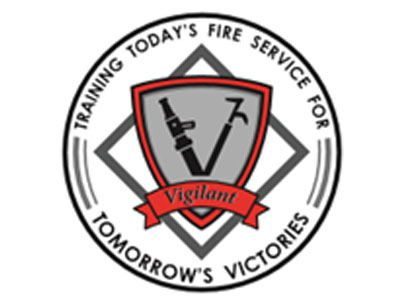 |
Conventional Forcible Entry #701 (Instructor Guide) |
1.50 |
This is the Instructor Guide for Lesson #701 Conventional Forcible Entry. This Instructor Guide is intended to prepare a lead instructor to deliver this course curriculum. Included in this guide is a review of lesson content, lesson resources, and required lesson materials. The lead instructor must pass this instructor guide course with a minimum score of 80% to receive the course materials for this lesson. |
 |
Convertirse en Experto en Tecnología (Spanish) Becoming Tech Savvy |
2.00 |
Este curso fue diseñado para ayudarlo a aprender varios consejos y trucos para usar sus dispositivos de la manera más eficiente posible. Esto incluye habilidades tecnológicas, información de seguridad y atajos de teclado y mouse.
This course was designed to help you learn various tips and tricks to use your devices as efficiently as possible. This includes tech skills, safety & security information, and keyboard and mouse shortcuts.
|
 |
Coping with Crying (CDA 1 & 3) |
2.00 |
Babies cry to communicate. In fact, sometimes it's the only way babies can communicate. Coping with crying can be a challenge, especially for people who have little or no experience care for infants. Learning to cope with crying is critical, as infant crying is the number one trigger for shaking a baby. In this course, we will learn about Shaken Baby Syndrome, and about ways to cope with a crying infant. This course is designed to be part of a Child Development Associate (CDA) Credential™ curriculum. It covers CDA Subject Area 1, Planning a Safe and Healthy Environment and CDA Subject Area 3: Supporting Children's Social and Emotional Development. This course can also be taken as a stand-alone learning event, or as part of a broader early childhood education curriculum. |


























